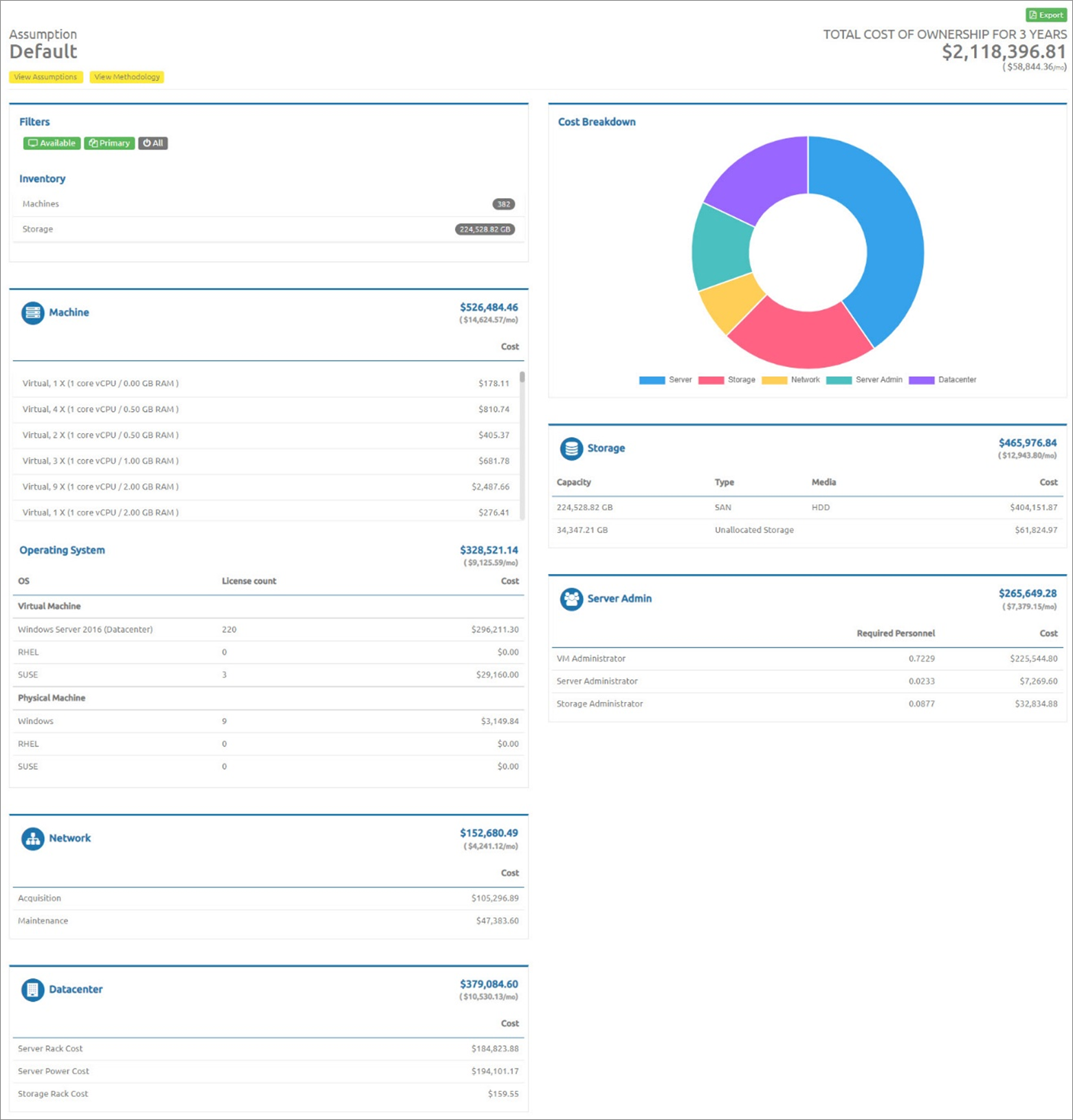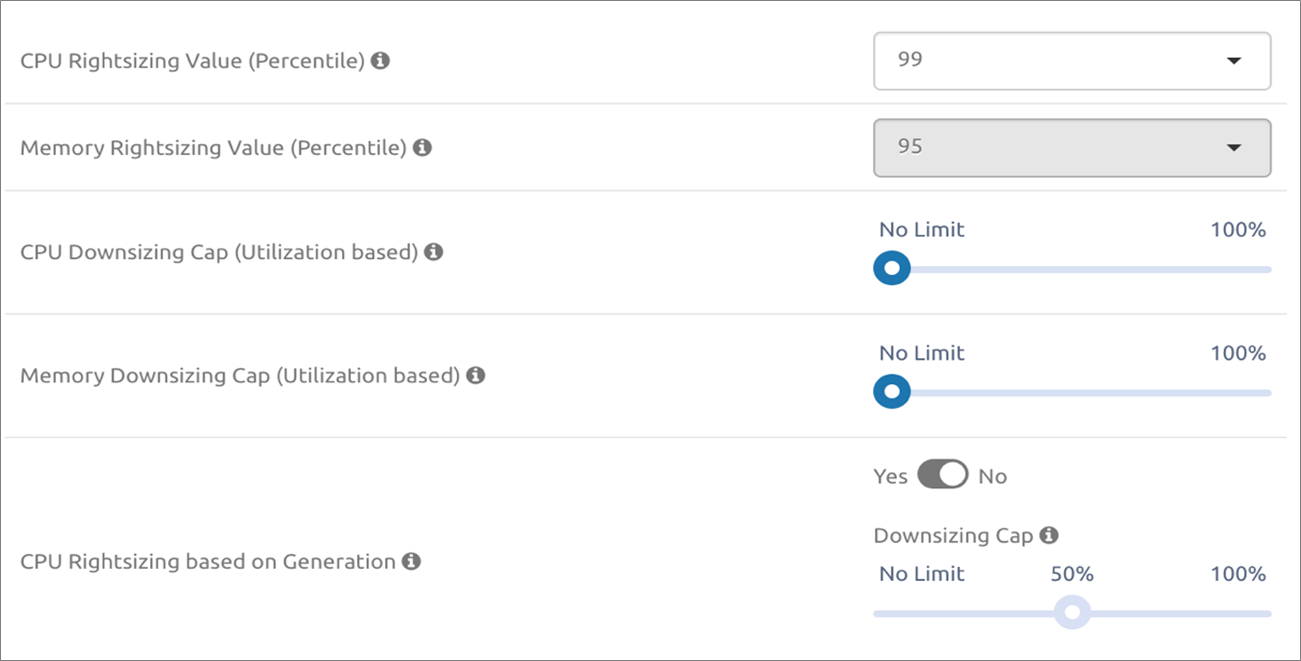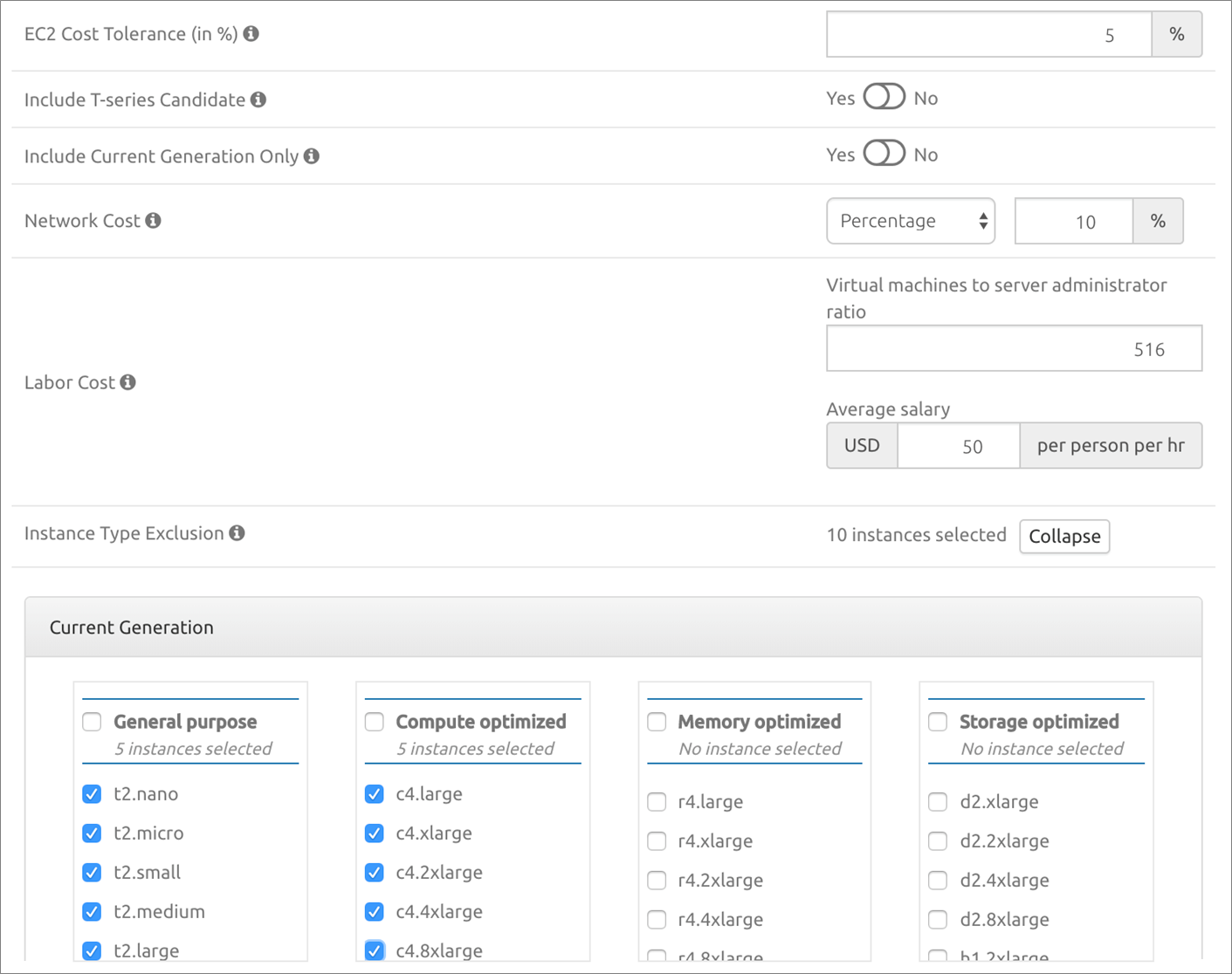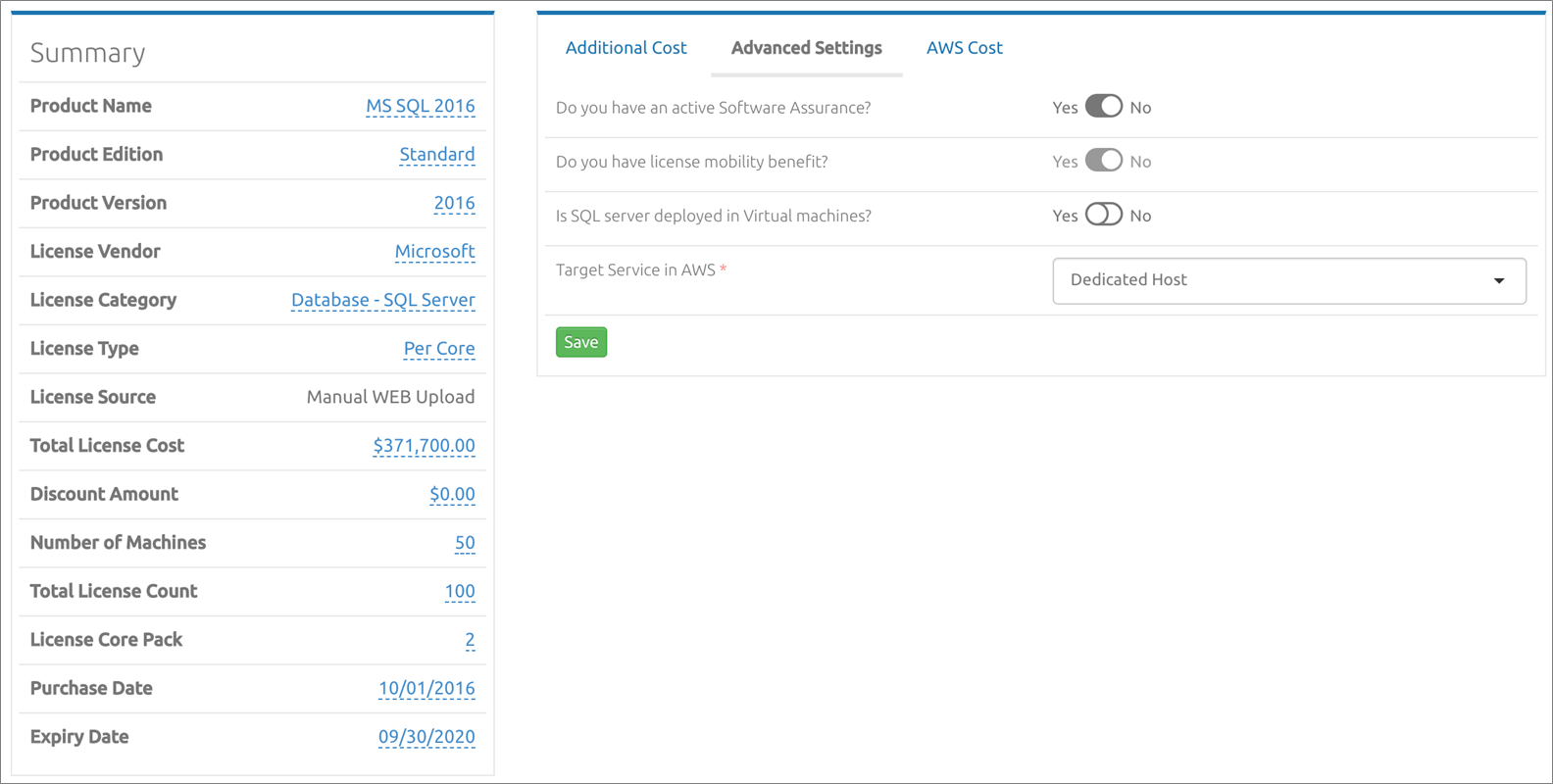AWS Partner Network (APN) Blog
Building a Case for Cloud Migration Based on TCO with CC Analyzer from CloudChomp
By Kumar Kisalaya, Lead Solutions Architect at CloudChomp, Inc.
By Ashok Kasti, Lead, Web Technologies at CloudChomp, Inc.
By Jim Huang, Sr. Partner Solutions Architect at AWS
 |
 |
Considering the complexity involved in a cloud migration project, arriving at the decision to migrate one’s company to the public cloud is not always easy.
Total Cost of Ownership (TCO) is a key factor in getting to a directional decision. This typically involves assessing an organization’s current spend in running and maintaining IT assets and applications, and then comparing it with the TCO of migrating to and operating on Amazon Web Services (AWS).
TCO assessment requires a thorough analysis of IT capital expenditure (CapEx) and operating expenditure (OpEx) on-premises, as well as the costs of migrating workloads to AWS and running applications with AWS resources.
This TCO analysis can involve physical and virtual servers, storage, networking, software license structure, data center facility, resource right-sizing for cost optimization on AWS, human capital, and much more. Such an analysis is complex and daunting to organizations needing to make a cloud migration decision in a timely manner.
In this post, we’ll discuss an AWS migration assessment tool called CC Analyzer, which simplifies and automates discovery and TCO-based analysis while helping organizations decide and plan out migrations to AWS.
CC Analyzer was developed by CloudChomp, an AWS Partner Network (APN) Advanced Technology Partner with the AWS Migration Technology Competency.
TCO Analysis Technology Characteristics
TCO analysis technology is characterized by several key capabilities, as we’ve outlined below.
- Source Data Collection: Takes place in data centers on-premises through automated discovery tools or existing data sets, such as configuration management database (CMDB) extract and VMware vCenter extract. The collected data includes, but is not limited to, server CPU model, core count, RAM, storage type, operating system version and license, resource utilization at various granularity and aggregation levels, and other custom tags.
. - On-Premises TCO Estimation: Calculates on-premises TCO based on collected data from the source environment. This includes costs for servers, storage, networks, labor, and data center facility.
. - Target Resource Right-Sizing: Selects target resources to run migrated workloads on AWS in a cost-effective and performance-efficient manner. For example, a resource right-sizing algorithm selects the Amazon Elastic Compute Cloud (Amazon EC2) instance type based on the source server characteristics and usage profile.
.
At the same time, the resource right-sizing algorithm considers the characteristics of Amazon EC2 instance types such that the instance yields the required performance with the least cost, thus minimizing TCO.
. - Target Resource Recommendation: Suggests types of resources for running migrated workloads on AWS, and considers application profiles and user preferences in addition to cost optimization through resource right-sizing. For example, a target resource recommendation algorithm selects an Amazon EC2 type based on the application’s run-time characteristics in terms of CPU-intense, memory-intense, storage I/O-bound, or network-bound.
.
A recommendation engine also has the flexibility of letting users set target resource selection preferences, such as enabling/disabling burstable Amazon EC2 types (T2/T3) and different resource allocation schemes.
. - License Analysis: Software licenses are often a major contributor to overall TCO, but are likely to be overlooked. The software license costs involve license fees paid to vendors, including any support fees.
. - Migration Bubble Analysis: Migration costs include any cost incurred during the actual migration, such as expenses related to migration consultants and the technology providers. As these costs can be a significant chunk of the overall cost, a TCO-based analysis tool has to have capabilities to capture migration costs as well.
CloudChomp Ecosystem
CloudChomp’s migration assessment tool provides a flexible and comprehensive platform that does most of the heavy lifting in terms of data collection, right-sizing, and target recommendations, while at the same time providing ample flexibility to account for special cases.
The CloudChomp ecosystem consists of three major components:
- CC Explorer (CCEX)/Custom Collectors is an agentless data collection tool, delivered as a virtual appliance (VA) in the OVA format. It has an intuitive web-based interface and can collect data from virtualized as well as physical servers. In addition to the VA, CloudChomp has various standalone tools that collect data from various environments.
. - CC Analyzer (CCAN) is a web-based software-as-a-service (SaaS) application that is the primary workhorse for analyzing the data collected from the environment to be assessed. It consists of a data analytics engine and a presentation/reporting layer that is intended to be used as a one-stop platform for assessment of the data.
. - CloudChomp Partner Portal (CCPP) is another web-based management tool, which is delivered as a SaaS application that partners and consultants can use for managing and administering individual organization’s accounts. It also allows users to view high-level reports rolled up across all of the accounts under them.
In this post, we will only be discussing the first two components: CC Explorer and CC Analyzer, both of which are for TCO calculation. CC Partner Portal, on the other hand, is mostly for administering and managing customer accounts, and is not involved in TCO calculation.
Figure 1 – CloudChomp ecosystem and components.
TCO Analysis with CloudChomp
Let’s take a look at how CloudChomp helps accelerate migration assessment by providing TCO analysis functions for making the business case to migrate to AWS.
Source Data Collection
CloudChomp has three primary ways of collecting data from the source environment:
CC Explorer: CCEX employs two methods to collect data from virtualized and/or non-virtualized environments.
- Data collection from vCenter (for virtualized environments): For environments running VMware vCenter, the quickest way to get to the assessment reports are via data collection from vCenter. CCEX collects data natively from vCenter, and the preliminary report is typically available within 48 hours of users setting up data collection.
.
Configuring data collection is usually a breeze, as connection to a single machine (vCenter database) needs to be configured. Individual VMs are not accessed in any way.
. - Data collection from all other sources via SNMP: SNMP-based data collection is employed where vCenter-based data collection is not feasible, such as cases where users’ environments primarily consist of physical servers, or where a different virtualization platform is used.
.
This method provides information that can be used for machine dependency and application discovery. Users simply need to turn on the SNMP agents on the target systems and they are ready to go.
CloudChomp Platform API: This is a RESTful API you can use to programmatically and periodically send data to CloudChomp. It’s perfect for users who want flexibility to collect live information they need from virtually any data source.
Flat file/CSV Upload: Users can drop flat files/CSV files in custom formats to CC Analyzer’s web interface and have data imported seamlessly. CCAN has a flexible configuration-based file import feature allowing users to import files with varying number and types of data.
On-Premises TCO Estimation
CC Analyzer’s 1ClickTCO feature uses a five-pillar methodology for on-premises TCO estimation. The costs incurred in the source environment are broadly divided into five components: server, storage, network, data center, and personnel costs.
Figure 2 – CC Analyzer’s five-pillar TCO analysis methodology.
- Server Costs: Includes the cost for purchasing and maintaining compute hardware, virtualization software, and operating system costs.
- Storage Costs: Includes purchase and maintenance cost for storage hardware and software.
- Network Costs: Includes network hardware and software purchase and maintenance cost.
- Data Center Costs: Includes data center costs, such as rack costs, power costs, and others.
- Personnel Costs: Includes labor/personnel costs for managing and maintaining computer, storage, and network capabilities.
CloudChomp’s TCO algorithm is driven by inputs from live user data and customizable assumptions. These parameters are used by the algorithm to compute TCO.
Figure 3 – On-premises assumptions.
Assumptions let users modify virtually every aspect of on-premises TCO cost calculation. These include list prices, discounts, RAID levels, overheads, power, and data center-related parameters.
You can create as many custom assumptions as you want, and users typically create a custom assumption for each of the physical locations of their data centers.
Assumptions (custom or default) can then be applied to a subset (via filters) of your inventory to get the TCO for just that subset. The results of 1ClickTCO are extremely exhaustive and show detailed cost breakdowns for all five pillars.
Figure 4 – On-premises TCO report.
Target Resource Right-Sizing
CCAN does right-sizing of resources. This is primarily based on time series utilization data for resources such as CPU and memory, which are collected from the source environment.
CCAN looks at all of the collected historical data before right-sizing the resources. During the recommendation phase, the right-sized values are fed to the recommendation engine to get the results.
CCAN’s right-sizing algorithm is highly customizable, and you can tune the algorithm to suit many needs. For instance, users can choose to right-size for a peak value (100th percentile) or to the 95th percentile.
Similarly, you can choose to have a cap on the value by which the right-sizing is done. As an example: users can choose to set the maximum CPU downsizing being set to 50 percent value, which means the right-sized CPU value would never be less than 50 percent of the provisioned value.
In addition to these controls, there are advanced right-sizing options for the CPU that take into account the age/generation of the CPU on the source versus target environments, and then right-size the CPUs accordingly.
Figure 5 – Right-sizing settings.
Target Resource Recommendation
Based on the data collected from the source environment and right-sizing results, CCAN’s recommendation engine makes suggestion on the target AWS environment and target AWS resources in the following areas.
Compute
CCAN can suggest instance types on AWS against the source environment based on the right-sized or provisioned values.
It considers various optimization parameters, such as instance families and burstable instances, cost-benefit analysis using the balance between purchase options, and a mixture of on-demand versus reserved instances based on the actual resource consumption and uptime.
Like-for-Like analysis gives the recommendations on AWS based on the provisioned on-premises capacity, while CC Optimized analysis gives a right-sized recommendation based on historical utilization of resources, with on-demand pricing or reserved instances (RI) pricing.
CC Expert analysis gives advanced recommendations and considers uptime and a balance between various payment options on AWS.
Figure 6 – Compute recommendations.
The recommendation engine, while being extremely powerful, is equally flexible and various aspects of it can be controlled via settings.
For instance, you can choose to include or exclude specific target instance types or families to be recommended on AWS. Similarly, you can set the tolerance values that determine the preference between various payment options.
Figure 7 – Compute recommendation settings.
Storage
CCAN recommends on-premises storage nodes to appropriate storage services on AWS.
This includes services like Amazon Elastic Block Store (Amazon EBS), Amazon Elastic File System (Amazon EFS) and Amazon Simple Storage Service (Amazon S3), including their variants and sub-services.
Figure 8 – Storage recommendations.
The storage system recommendation engine takes into account various parameters from on-premises systems to make recommendations.
The application is able to handle the raw capacity or the usable disk capacity, and is aware of various storage-specific parameters such as media type, RAID configuration, latency, IOPS, and throughput. All of this can be imported into the system in bulk.
Figure 9 – Storage analysis parameters.
SQL License Analysis
Software licenses constitute a major portion of the costs, be it on-premises or on the cloud. Thus, a TCO analysis is incomplete without considering the license cost.
CCAN treats software licenses as a first-class citizen and the software licenses are a key part of the asset inventory.
Similarly, CCAN has a dedicated migration planner module that helps users plan their migration and presents you with options for migrating licensed software to AWS.
Finally, the application prices out the estimated license costs on AWS for a side-by-side comparison.
Figure 10 – SQL license profile.
Customer Success
CloudChomp has delivered TCO assessments to AWS customers and APN Partners for more than two years. We highlight two successes here.
Public Consulting Group (PCG)
PCG is a leading public sector management consulting and operations improvement firm. They needed a high-level view of their data centers across the globe to assess and plan their AWS migration.
PCG also needed cost estimates broken down by workloads, locations, and environment types across all of their data centers. This was challenging because different geographies had their own costs associated with them, and there were cases where single workloads were spread across various data centers.
CC Analyzer provided PCG with a detailed cost analysis for on-premises versus AWS. Using CC Analyzer’s custom assumptions, user-defined functions, and filters, PCG was able to estimate the costs by workloads, locations, and other parameters. They were also able to view the long-term cash-flow projections to estimate ROI and, thus, could budget their finances reliably.
PCG used the results from CC Analyzer to gain complete visibility of their existing environment, visualize their target AWS deployment and associated costs, plan and migrate their on-premises environment to AWS in phases, and maximize cost savings.
Innovative Interfaces
Innovative Interfaces, a leading provider of integrated library systems for public, academic, and specialty libraries, realized their initial AWS cost was higher than anticipated.
This was primarily because of their spiky and bursty workloads and considerable seasonality in their resource utilization. Due to raised concerns, they halted additional migrations to AWS.
With CC Analyzer, Innovative Interfaces was able to fine-tune the analytics method by using appropriate right-sizing percentile values to better reflect their use case. In addition, they could exclude certain instance types from being suggested as recommended by their cloud operations team.
They also customized the assumptions to use a different hardware refresh rate, network, and labor parameters to model their exact on-premises environment. This resulted in a more accurate assessment, and a 13 percent potential saving was identified.
Innovative Interfaces is now back on track for their additional workload migrations to AWS.
Summary
CloudChomp’s TCO-based migration assessment technology provides a platform for migration specialists to collect, analyze, and plan cloud migration paths with a focus on total cost of ownership.
CloudChomp’s data collection options ensure that data from heterogeneous sources can be easily fed to the system. The right-sizing and recommendation engines provide the flexibility for migration specialists to tune the algorithms to fit their specific needs.
CC Analyzer’s inventory consists of compute, storage, and SQL software licenses. TCO estimates are calculated for both source and target environments, helping assess the overall ROI for the migration.
CC Analyzer is available on AWS Marketplace >>
Next Steps
Reach out to CloudChomp at AWSmigration@cloudchomp.com for training, demos, and assistance. User guides and other resources are available in CloudChomp’s demo account.
Request access to a demo account for CloudChomp, or visit cloudchomp.com.
CloudChomp – APN Partner Spotlight
CloudChomp is an AWS Migration Technology Competency Partner. They focus on accelerating right-sized migration to AWS and eliminating the waste associated with manual and expensive assessment processes.
Contact CloudChomp | Solution Overview | AWS Marketplace
*Already worked with CloudChomp? Rate this Partner
*To review an APN Partner, you must be an AWS customer that has worked with them directly on a project.










